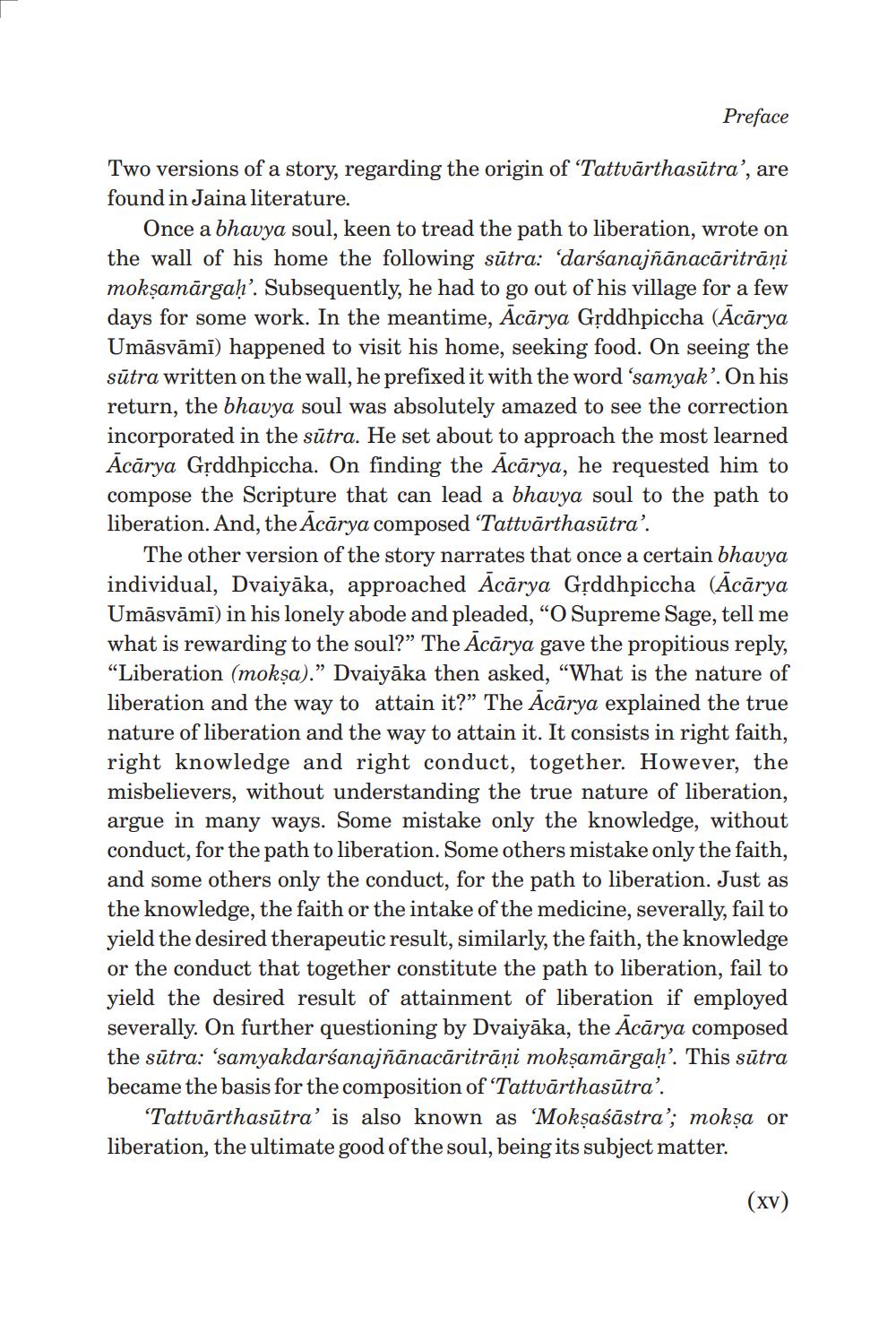________________
Preface
Two versions of a story, regarding the origin of 'Tattvārthasūtra', are found in Jaina literature.
Once a bhavya soul, keen to tread the path to liberation, wrote on the wall of his home the following sūtra: darśanajñānacāritrāņi mokşamārgaḥ. Subsequently, he had to go out of his village for a few days for some work. In the meantime, Acārya Gșddhpiccha (Acārya Umāsvāmī) happened to visit his home, seeking food. On seeing the sūtra written on the wall, he prefixed it with the word 'samyak'. On his return, the bhavya soul was absolutely amazed to see the correction incorporated in the sūtra. He set about to approach the most learned Acārya Gțddhpiccha. On finding the Acārya, he requested him to compose the Scripture that can lead a bhavya soul to the path to liberation. And, the Acārya composed ‘Tattvārthasūtra'.
The other version of the story narrates that once a certain bhavya individual, Dvaiyāka, approached Ācārya Grddhpiccha (Ācārya Umāsvāmī) in his lonely abode and pleaded, “O Supreme Sage, tell me what is rewarding to the soul?” The Acārya gave the propitious reply, "Liberation (mokşa).” Dvaiyāka then asked, "What is the nature of liberation and the way to attain it?” The Acārya explained the true nature of liberation and the way to attain it. It consists in right faith, right knowledge and right conduct, together. However, the misbelievers, without understanding the true nature of liberation, argue in many ways. Some mistake only the knowledge, without conduct, for the path to liberation. Some others mistake only the faith, and some others only the conduct, for the path to liberation. Just as the knowledge, the faith or the intake of the medicine, severally, fail to yield the desired therapeutic result, similarly, the faith, the knowledge or the conduct that together constitute the path to liberation, fail to yield the desired result of attainment of liberation if employed severally. On further questioning by Dvaiyāka, the Acārya composed the sūtra: 'samyakdarśanajñānacaritrāni moksamārgah'. This sūtra became the basis for the composition of 'Tattvārthasūtra'.
"Tattvārthasūtra' is also known as 'Mokşaśāstra'; mokṣa or liberation, the ultimate good of the soul, being its subject matter.
(xv)




